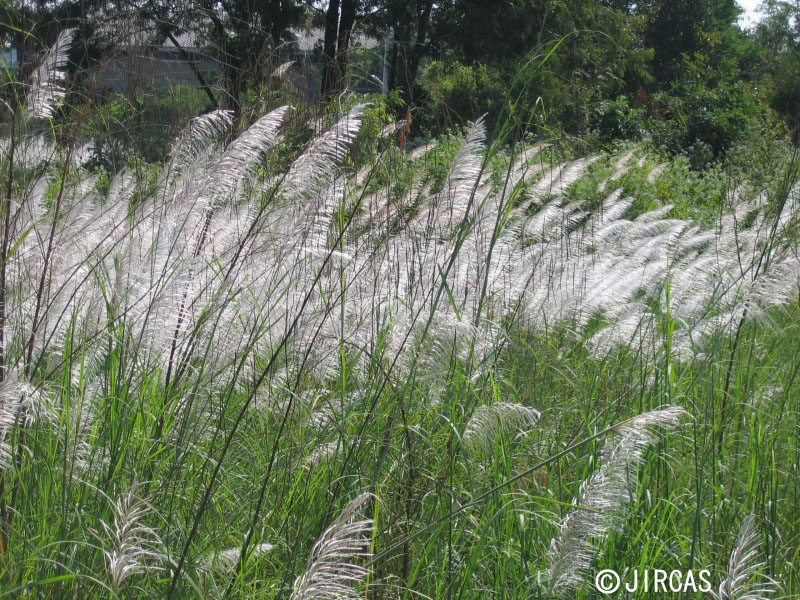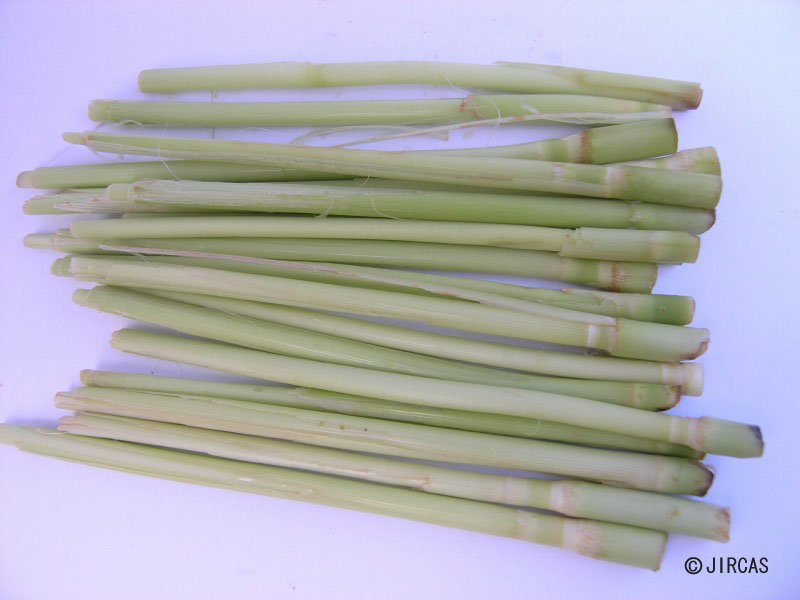Saccharum spontaneum L. (Gramineae)
- Scientific name
- Saccharum spontaneum L.
- Family name
- Gramineae (Syn. Poaceae)
- Common name
- Wild sugarcane (English); nangoku waseobana (Japanese)
- Local name
- Oi-nu, lao
A large perennial grass, 1–4 m tall. Stems large, fascicular, erect, surrounded by overlapping leaf sheaths at base. Leaves alternate, narrow, linear, 50–100 × 5–8 mm; midrib wide, white. Panicles 20–60 cm long; rachis arises pinnately from raceme.
Common in sunny, marshy areas at elevations from near-sea level to 2,000 m a.s.l. Often found in ditches along highways and on abandoned land. No record of cultivation, but can be propagated by sucker separation.
Young shoots are collected from wild populations and the inner parts are cooked in a manner similar to bamboo shoots. Uncommon as a local vegetable; sold in only a few markets in north-eastern Thailand.
Young shoots are collected from wild populations and the inner parts are cooked in a manner similar to bamboo shoots. Uncommon as a local vegetable; sold in only a few markets in north-eastern Thailand.





